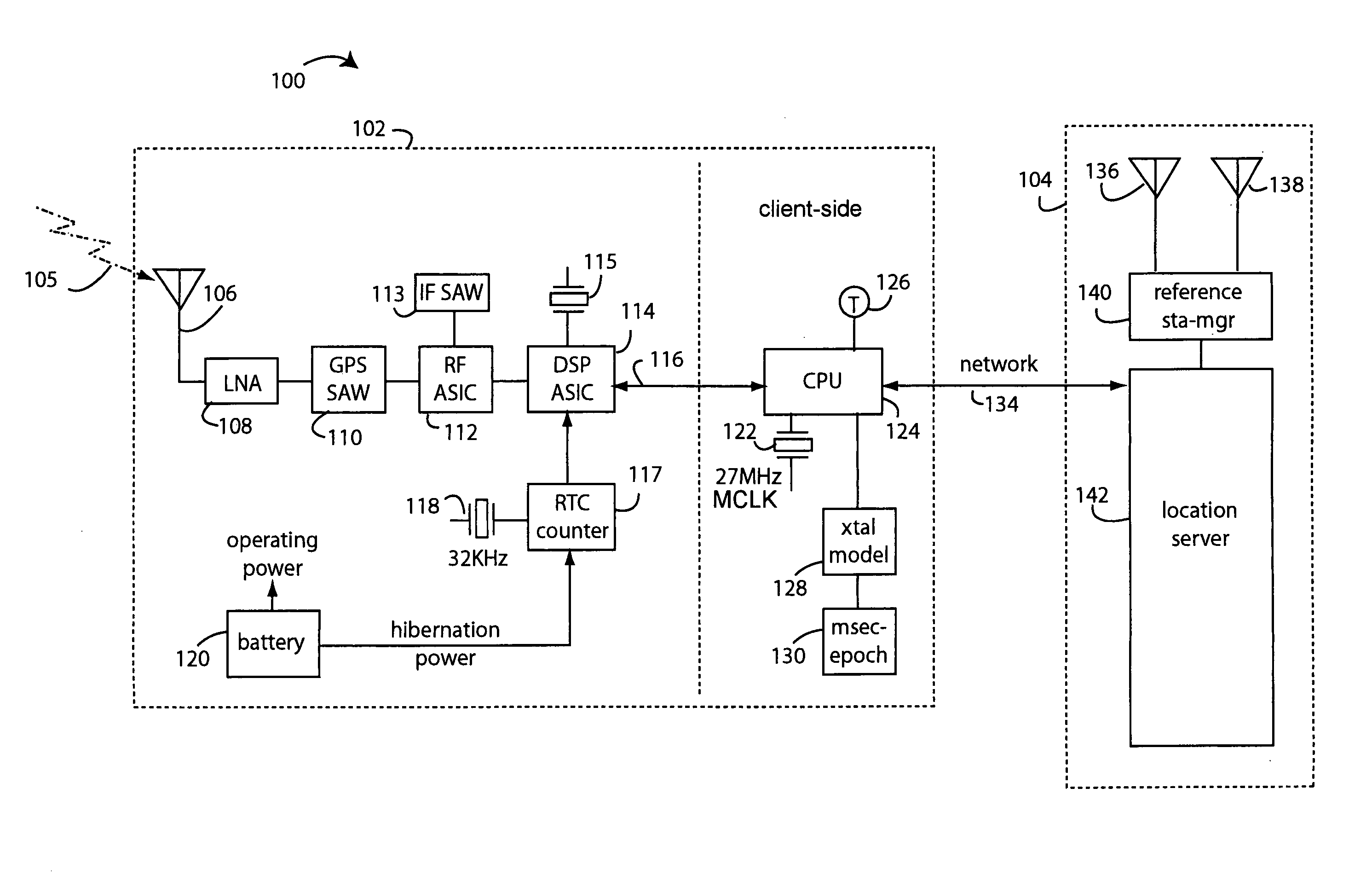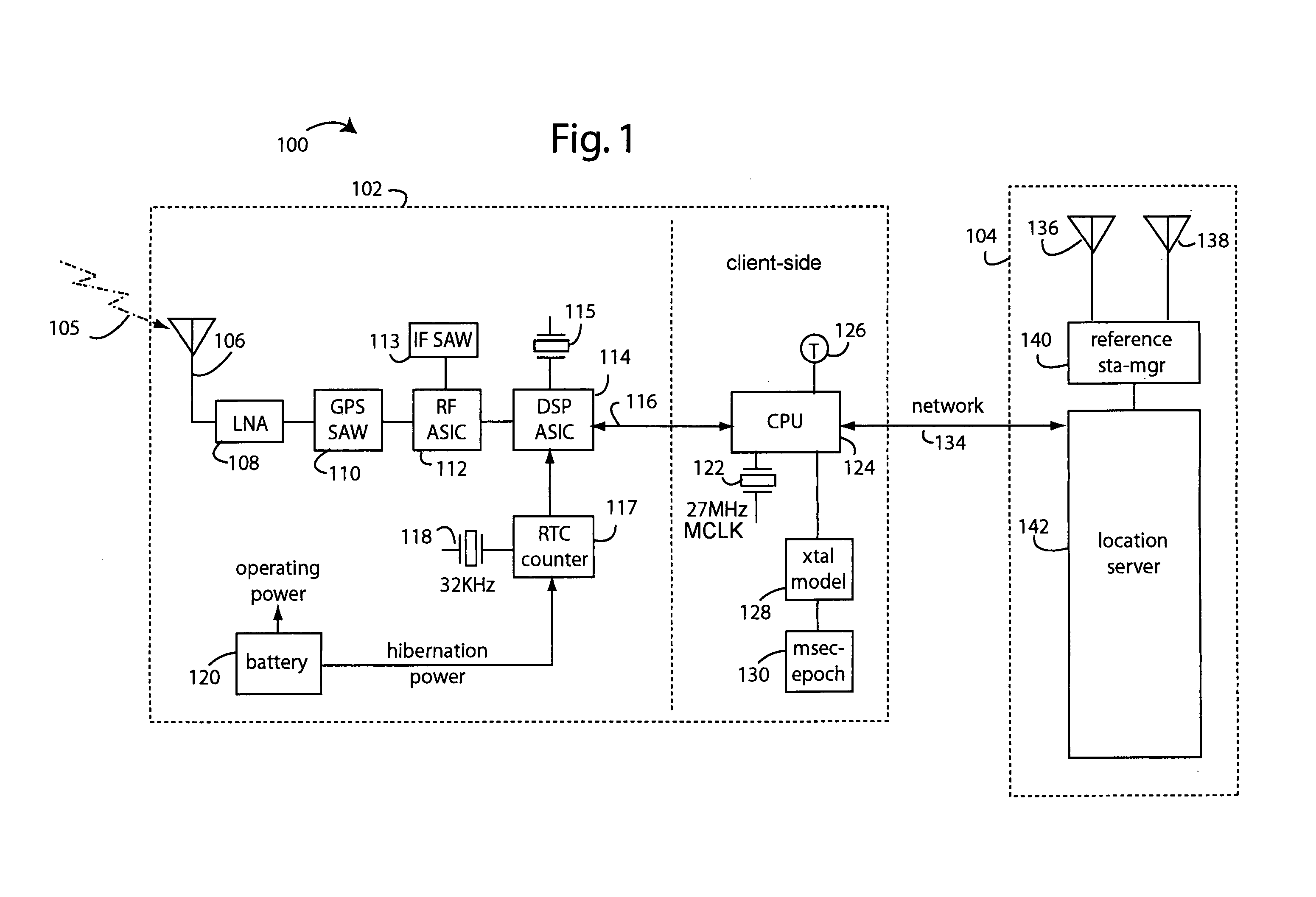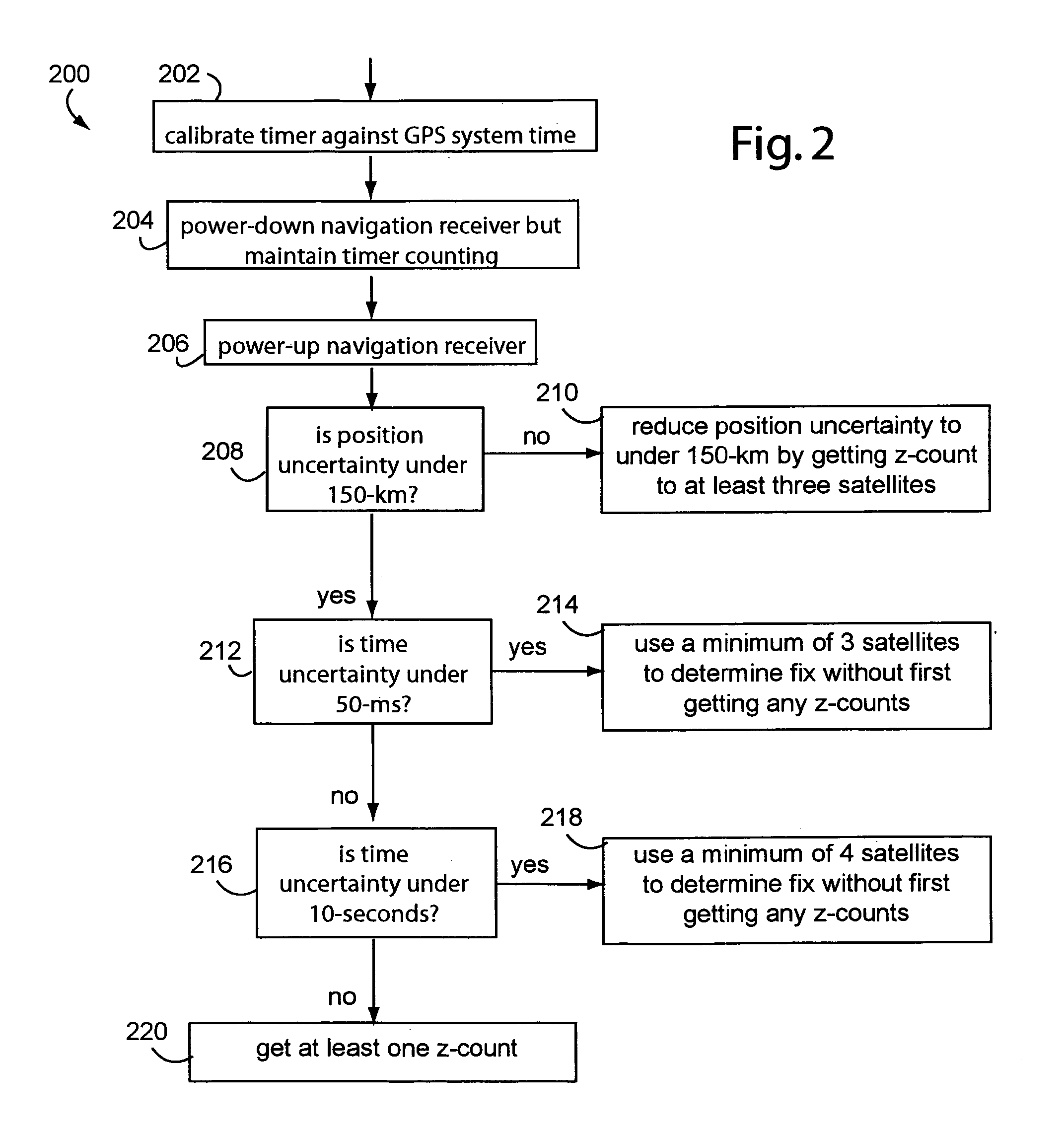Skipping z-counts and accurate time in GPS receivers
a receiver and gps technology, applied in the field of high-sensitivity navigation satellite receivers, can solve the problems of high-sensitivity gps receivers, local clock errors, and large clock errors, and achieve the effect of reducing hibernation current and fast high-sensitivity fixes
- Summary
- Abstract
- Description
- Claims
- Application Information
AI Technical Summary
Benefits of technology
Problems solved by technology
Method used
Image
Examples
Embodiment Construction
[0018]FIG. 1 represents a high-sensitivity navigation satellite receiver system embodiment of the present invention, and is referred to herein by the general reference numeral 100. The system 100 includes at least one navigation platform 102 supported by a network server 104. The received transmissions from orbiting navigation satellites are represented by a signal 105. The principle benefits of the present invention are realized when signal 105 is too weak to allow the navigation data to be demodulated, but is strong enough to allow codephase to be obtained. Since the navigation platform 102 needs such navigation data to produce fixes, the network server 104 is called to provide such information.
[0019]Embodiments of the present invention are therefore associated with high-sensitivity GPS receivers that operate where signal strengths are very low and a previous position within one-half the codephase ambiguity distance is available. (Which is ordinarily about 75-km, but expands to ab...
PUM
 Login to View More
Login to View More Abstract
Description
Claims
Application Information
 Login to View More
Login to View More - R&D
- Intellectual Property
- Life Sciences
- Materials
- Tech Scout
- Unparalleled Data Quality
- Higher Quality Content
- 60% Fewer Hallucinations
Browse by: Latest US Patents, China's latest patents, Technical Efficacy Thesaurus, Application Domain, Technology Topic, Popular Technical Reports.
© 2025 PatSnap. All rights reserved.Legal|Privacy policy|Modern Slavery Act Transparency Statement|Sitemap|About US| Contact US: help@patsnap.com



